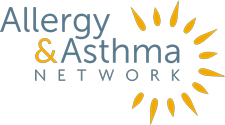Q: What is the Yellow Zone for people with asthma?
Leonard Bacharier, MD: The Yellow Zone is the first indication that your short-term asthma control is worsening.
Patients in the Yellow Zone start to experience asthma symptoms, a drop in peak flow, increased use of their quick-relief albuterol inhaler, and nighttime awakenings.
People with asthma need to be well informed of the signs of worsening asthma. They should be given a written, predetermined strategy – called an Asthma Action Plan – for what to do when asthma is worsening.
Q: What can someone in the Yellow Zone do to prevent falling to the Red Zone?
Dr. Bacharier: The Red Zone is a sign you are experiencing severe asthma symptoms and may require emergency medical care.
Medication strategies to prevent falling to the Red Zone may include:
- Use of quick-relief albuterol inhaler
- Use of inhaled corticosteroids
- Other therapies depending on age, type of disease, severity and background medication use
Q: What are signs that suggest a person with asthma needs to seek medical help?
Dr. Bacharier: Asthma symptoms that clearly affect respiratory function include:
- Persistent cough
- Wheezing
- Chest tightness
- Difficulty breathing
In addition to those symptoms, signs that indicate a severe asthma attack include:
- Fingers and lips turning blue
- Inability to speak in complete sentences
- Fatigue
- Sleepiness
Each of these should prompt immediate emergency care.
Leonard Bacharier, MD, FACAAI, is Professor of Pediatrics in Allergy, Immunology and Pulmonary Medicine and Section Chief of Pediatric Allergy and Immunology at Vanderbilt University Medical Center in Nashville, Tennessee. He is also Director of the Center for Pediatric Asthma Research.
Have a medical question? Email editor@allergyasthmanetwork.org or write to Ask the Allergist, Allergy & Asthma Network, 8229 Boone Blvd., Suite 260, Vienna, VA 22182.


 810304 Eaton Place, Suite 100
810304 Eaton Place, Suite 100